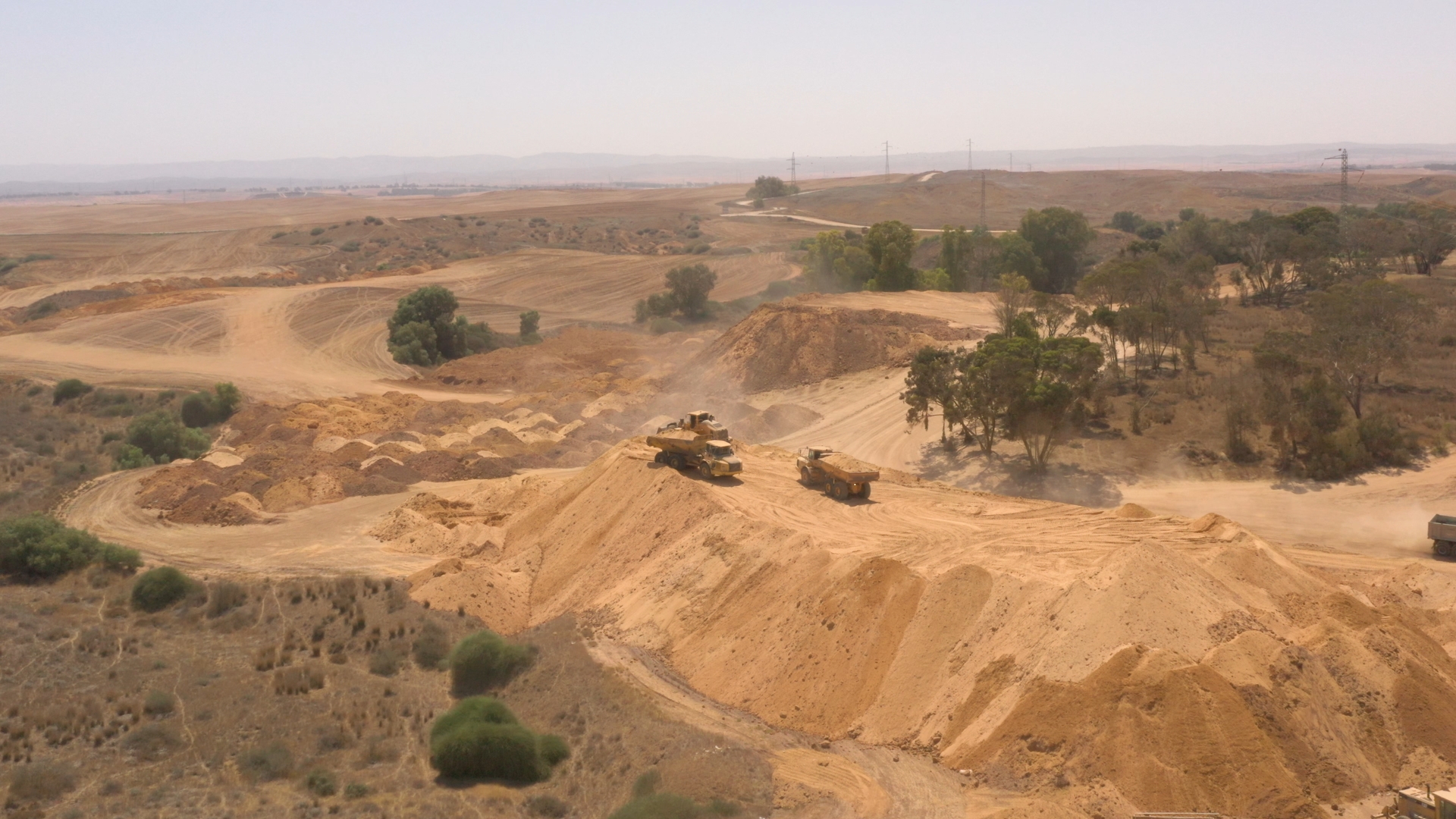
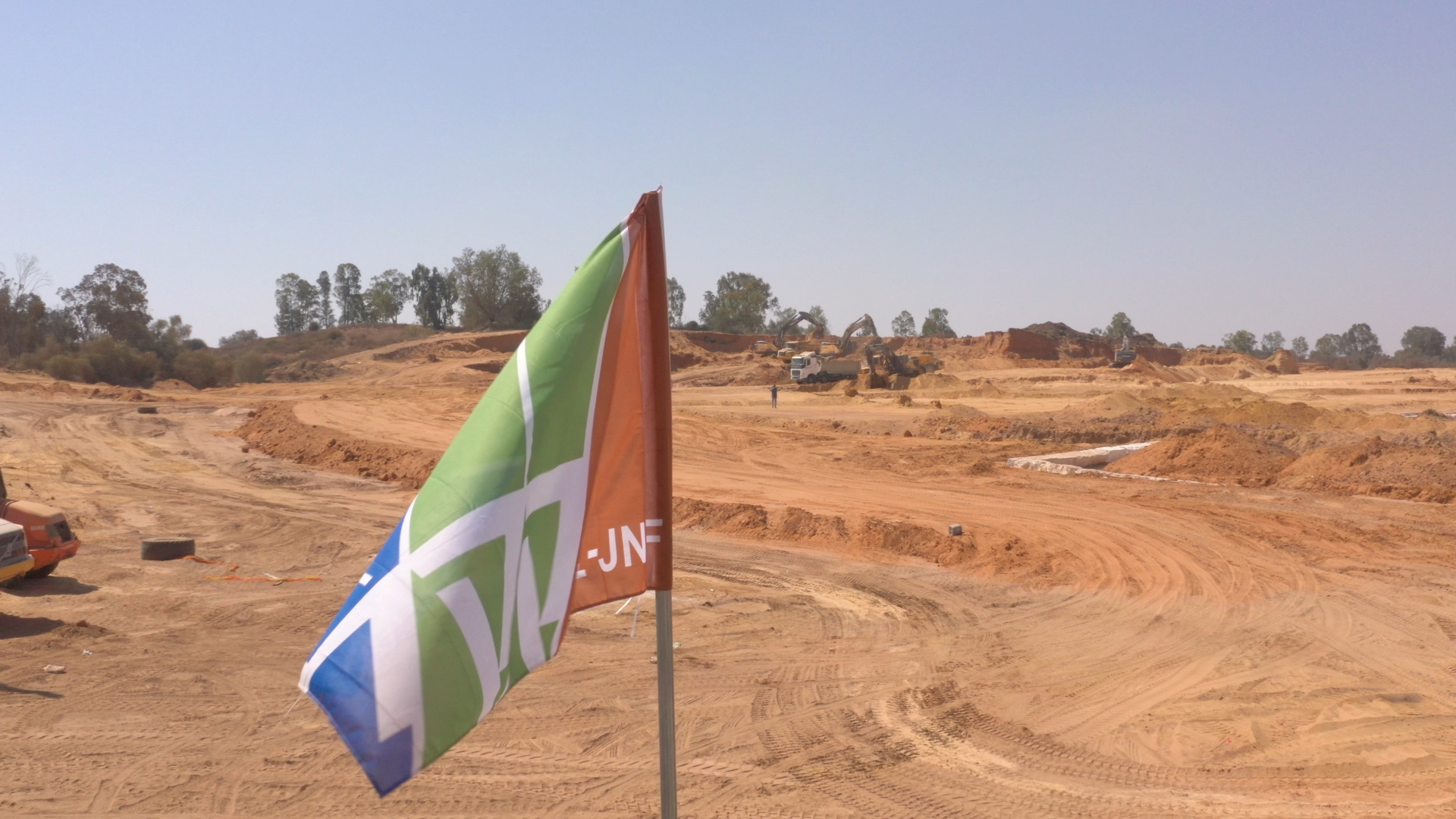
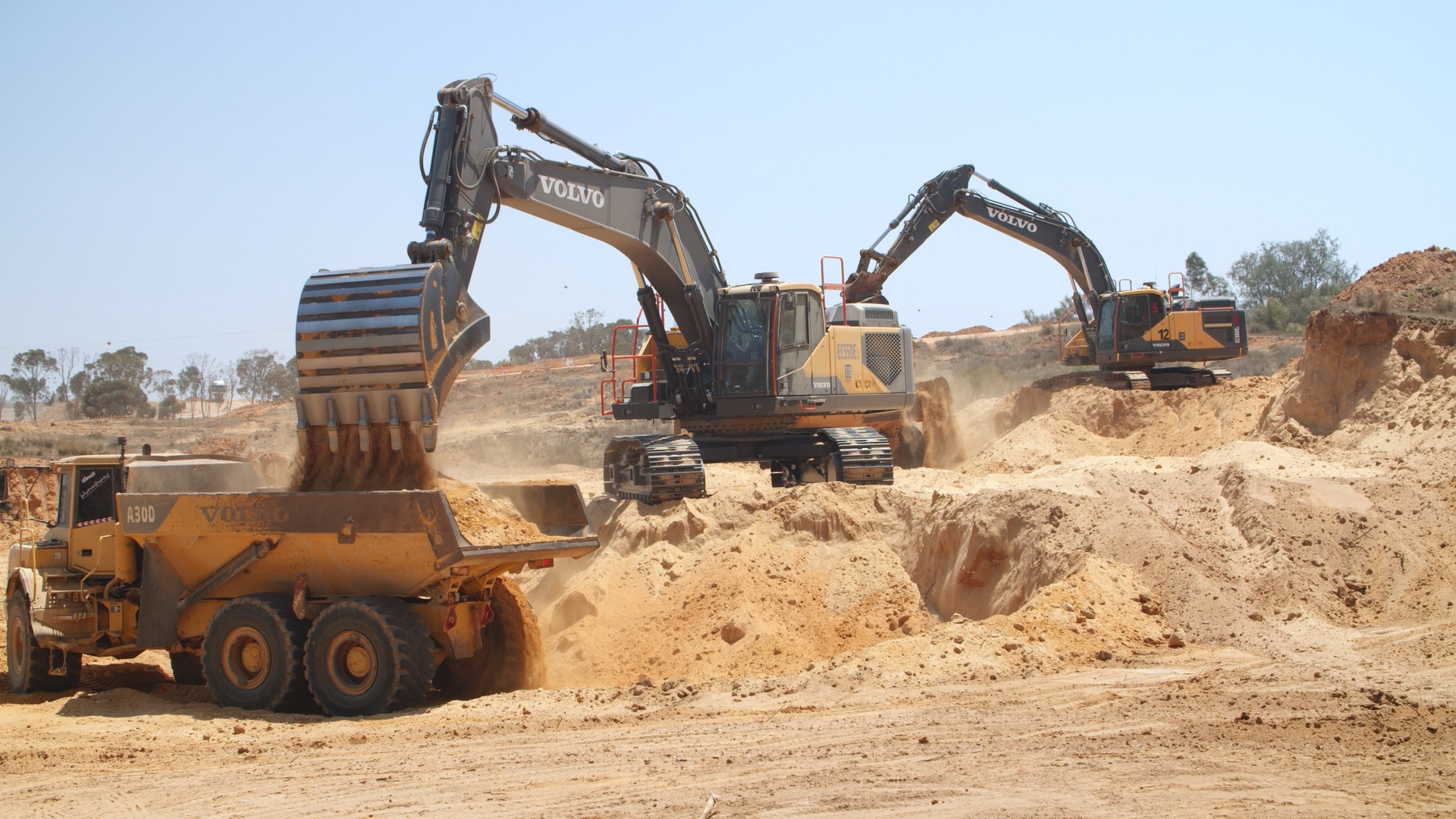
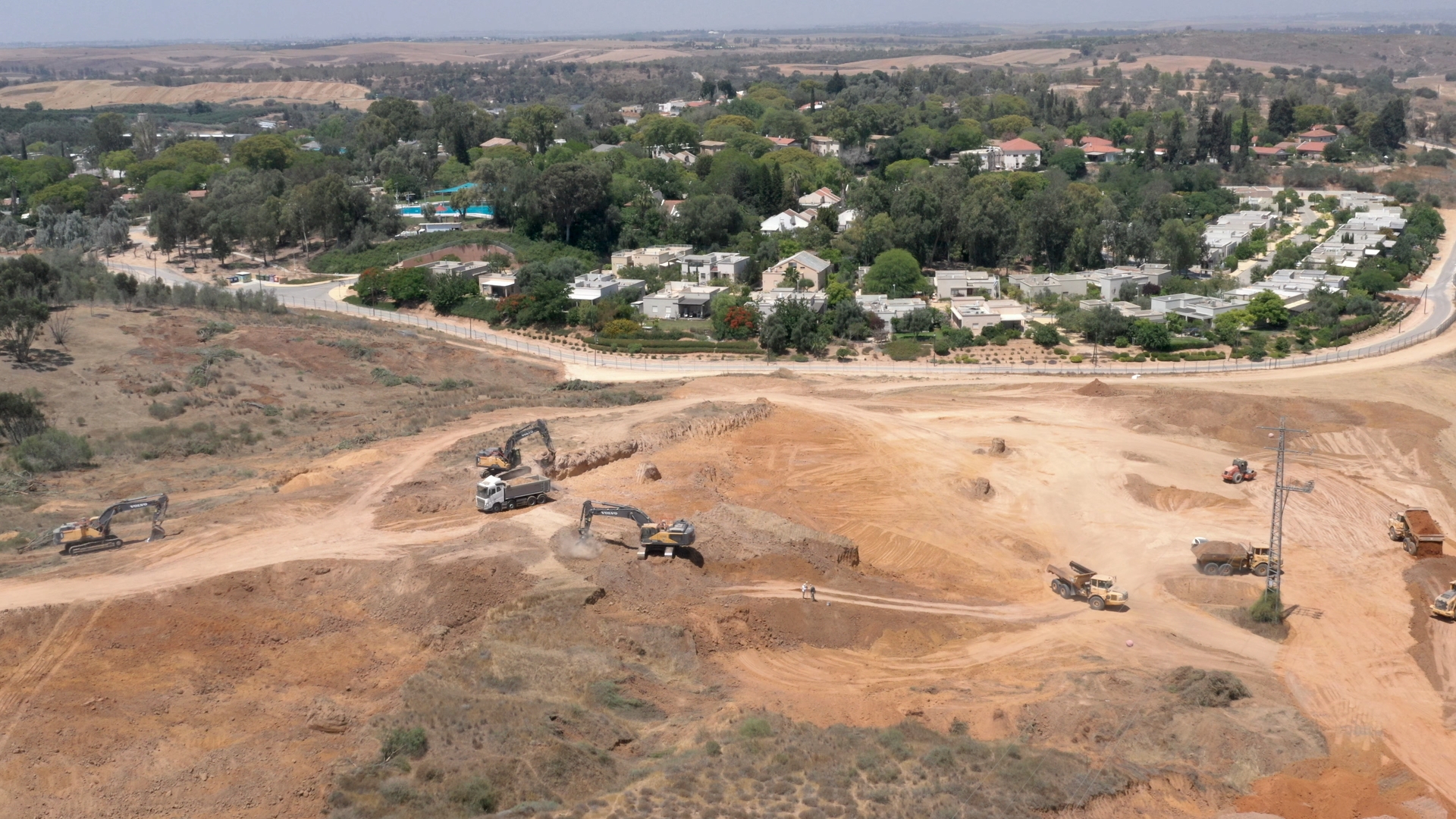
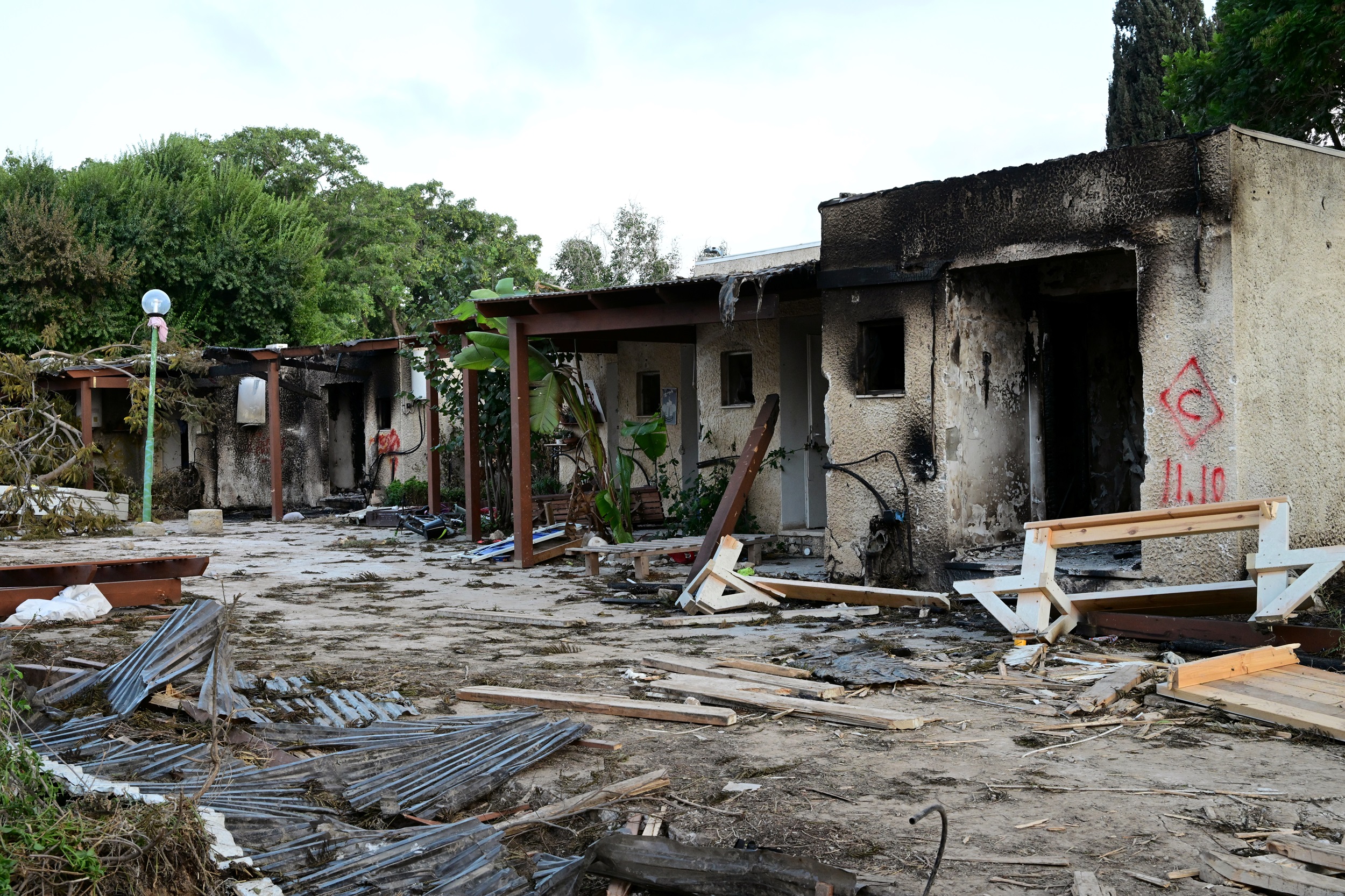
Introducing KKL-JNF’s flagship post-Oct 7 project: Preparing ground in Kibbutz Ruhama for a new residential neighborhood for Kfar Aza evacuees.
They survived, but lost everything
Kfar Aza was a pastoral kibbutz just 2 kilometers from the Gaza Strip. The October 7 attack changed everything. Sixty-two people were murdered, and 18 taken hostage. Today, the kibbutz stands silent, broken, and frozen in time. The crimes perpetrated here remain imprinted on the houses – a burnt dwelling here, rubble there, bullet holes everywhere. It will take at least 3 years to rebuild the kibbutz, but where will the surviving residents live in the meantime ?
A place to call home
In Kibbutz Ruhama KKL-JNF is quite literally preparing the ground for the solution: a new residential neighborhood that will contain prefab dwellings to house the evacuees. Since their rescue and evacuation on October 8, most of the residents of Kfar Aza have been living in a hotel on Kibbutz Shefayim in central Israel. Others, such as 31-year-old Gon Sussana and his family, have been dispersed around Israel.
Kibbutz Ruhama, located 16km to the northwest of Kfar Aza, will be a safe distance from the war zone but still in an area familiar to them the Shaar HaNegev Regional Council, which according to Sussana, is “fantastic, since going back to an area you know, where you are familiar with the school system, the supermarkets where you shop, your friends, is a big part of the recovery, and the courage of a person to take the first steps” in rebuilding themselves and getting their lives back together. “It’s critical, its lifesaving, and we’re very much waiting for it,” he said.
The work
The earth works and laying of infrastructure in Ruhama have been continuing apace under the devoted leadership of KKL-JNF construction engineer Michelle Pariyanti, who says that his team is working overtime to complete 10 months of work in half that time. “The staff begin work at 5 in the morning and finish at 11 or 12 at night,” he noted. And indeed, within the space of 49 days, Pariyanti’s team already managed to transform a sizable hill into a series of terraces and level plots and lay down infrastructure for water and electricity. The work involves excavating some 250 thousand cubic meters of earth to create an entirely new neighborhood on the eastern side of Ruhama and expanding an existing guest bungalow area to its west.
Upon the work’s completion 124 prefab dwellings will be installed in the eastern neighborhood, and 64 in the upgraded western part; together they will house 600 people (188 households) from Kibbutz Aza. Come moving day Ruhama’s current population of 500 will more than double overnight.
According to KKL-JNF’s Amit Friedman, who presented the plan, the idea is for the two communities to converge in some ways, while maintaining what makes them unique in other ways. For example, medical and security services will be run conjointly, while the addition of indoor and outdoor communal spaces will allow each community to run their own cultural and informal educational activities as they see fit.
In this way, the Kfar Aza evacuees will be embraced but not overwhelmed. After all, for the next three years at least, this will be the place that they call home.
According to Sussana, the ability to rebuild the Otef, and the communities, and to return home is the “true victory picture, the highest level of Zionism there is.”
“The ability to build a temporary community at the highest standard, within an incredibly short time period, is not something we take for granted. You are doing amazing work, and I thank you hugely, with all my heart; history will remember this well,” he concluded.
Together, let us write a new Zionist chapter; join us in rehousing an entire community as they embark on the intermediate stage of their journey home to the rebuilt Kfar Aza!
